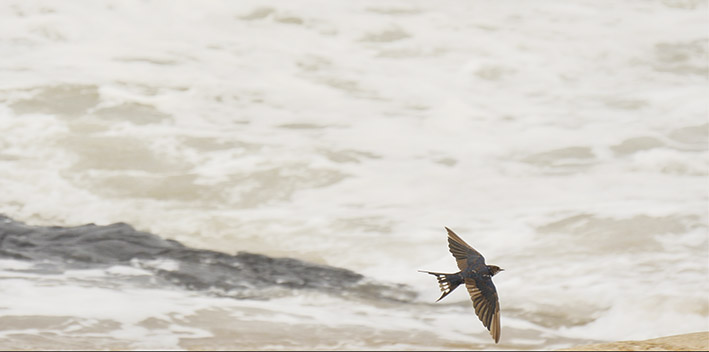It is round about 150 years ago, since the epic work Brehm’s Life of Animals was written. A best-selling work on the world of animals at least in the German speaking world.
No wonder that actress writer Barbara Geiger was smitten with the poetry of Alfred E. Brehm. To German ears the title Brehm’s Life of Animals is an all familiar sound even today. Still donning bookshelves around the country. All ten volumes were translated in numerous languages back then. Even today biologists around the world are knowledgeable of the o19th century scientist. All said and done though the oeuvre is not often being read and looked at anymore.
So director, actress and writer Barbara Geiger has taken it upon herself to transport the work into the 21st century with the help of scientists around Europe and beyond. Diving right into the realm of words to describe the beauties and wonders of animals that have the good or bad fortune to live on this planet with and despite us.
Since the winter of 2008/9 she has been continually researching and writing plays and has conquered the stage with her astonishing findings. She travelled far and wide to find out faunistic secrets in research stations in Germany, Italy, Sweden, Slovenia, South Afrika and Nigeria, England, Switzerland, Austria and France, you name it, she has been there.
By the way the earthworm has led her along the path of a very famous scientist, that is not known to have focused on the earthling by many. None other than Charles Darwin has written another best-seller on earthworms, right after he finished the book on The Origin of Species. Goes by the name of “The formation of vegetable mould, through the action of worms, with observations on their habits”, London 1881.
Science theatre, is most certainly theatre of a different kind!
So, this is the only theatre in the whole wide world that puts endemic endangered species as their stars on stage! With proper theatre venues in Berlin and Freiburg (Black Forest) and over 500 performances throughout Germany and Europe in pre-coronial times in 2019.
But if you think that the pandemic can stop a Frollein in being prolific, think again! She successfully went digital straight away with her very own Frollein TV Chanel!
And of course the time can be used well exploring new creatures, in anticipation of future bright eyed audiences. Enough inspiration for her to embark on new journeys to the realms of Oenanthe Oenanthe – The Northern Wheatear. National Parks in Schleswig Holstein and Lower Saxony are the natural stage, who’s ornithologists and lovers of nature are inviting the Frollein with open arms.
A little theatre revolution is at hand, with more and more projects being offered to the Frollein to study and research species that have a tricky time making it with us. Sometimes even desperate calls come to try and safe endangered species by giving them a public eye to safe them, sometimes in the nick of time.
The stages are prepared all over the World, even the UNO has asked the Frollein to appear in New York with none other than the King of Animals, The Earthworm. He is the brightest star in the Frollein repertoire, closely followed by the wolf and most recently by the cow no less.
Performances are produced in English, German, French, Italian and even Hindi, after a famous tour of India to Vandana Shivas Earth University in Dehradun and the Bhoomi Festival in Dehli in 2015.
One more highlight in the past years was the three week tour of NIgerias rain forest in Cross River State. Visiting remote villages the Frollein reached over 2000 people telling the story of Akbar, the barn swallow. 1,2 billion of the charming little travelling birds have an astonishing way of going to sleep right in the middle of the rain forest.
And now that the Frollein has gone digital – thanks to Corona –a Frollein channel on YouTube has been established and more projects are pouring in. Next in the chorus line plans are being made to research Lutra lutra – The Eurasian otter and Margaritifera margaitifera – The Freshwater pearl mussel.
Here is the big idea to bring Alfred’s Life of Animals right into the 21st century.



